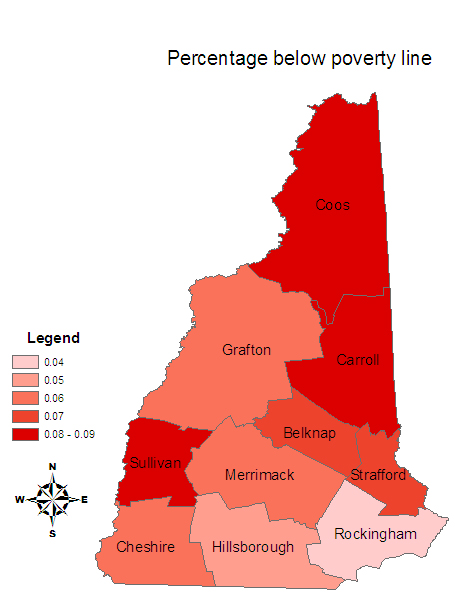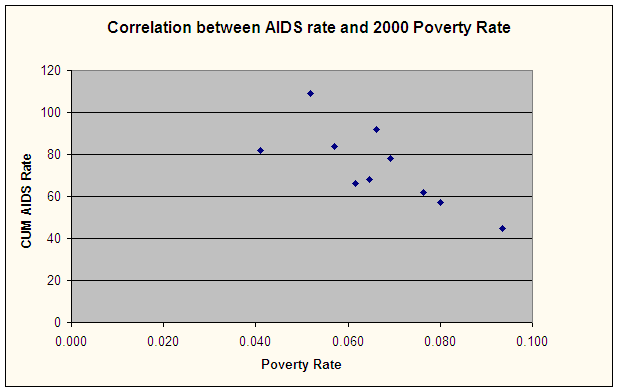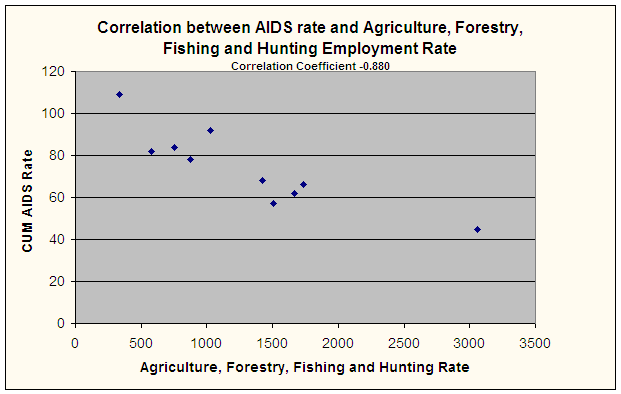| AIDSNew Hampshire | |||||
| Perceptions | Analysis | Assessment |
Data |
Sources |
|
I also looked at different economic indicators to see if AIDS is disproportionably affecting the poorer communities. However, the breakdown of the cumulative AIDS cases isn't specific enough to give a clear picture of the distribution among different income levels. There ended up being a positive correlation coefficient of 0.780 between cumulative AIDS cases and median family income. That also corresponded with a negative correlation of -0.758 with the 2000 poverty rate estimate which is statistically significant at the 97.5% confidence interval. (The poverty line for a four person household in 2000 was $17,050.) One explanation of this is that the distribution of AIDS cases is skewed towards more urban areas and areas closer to the Massachusetts border. These people are more likely to live and work in cities and make more money then those working in the agricultural field.
I tried correlating the cumulative AIDS rates with different occupations. I looked at correlations between the health care industry, food service industry, and agriculture. The agriculture, forestry, fishing, and hunting industry was the only one that was statistically significant. It had a negative correlation coefficient of 0.880 which is statistically significant at the 99% confidence interval. This again is indicative of the significantly higher cumulative AIDS rate in the urban areas compared to the rural ones.
Thinking that the unemployment rate might be a better indicator of a community’s economic position, I tried correlating that with the cumulative AIDS rate. That correlation didn't prove significant, which might be related to the fact that unemployment rates are for a given month and I'm looking at the cumulative AIDS rate for a period of about twenty years.





